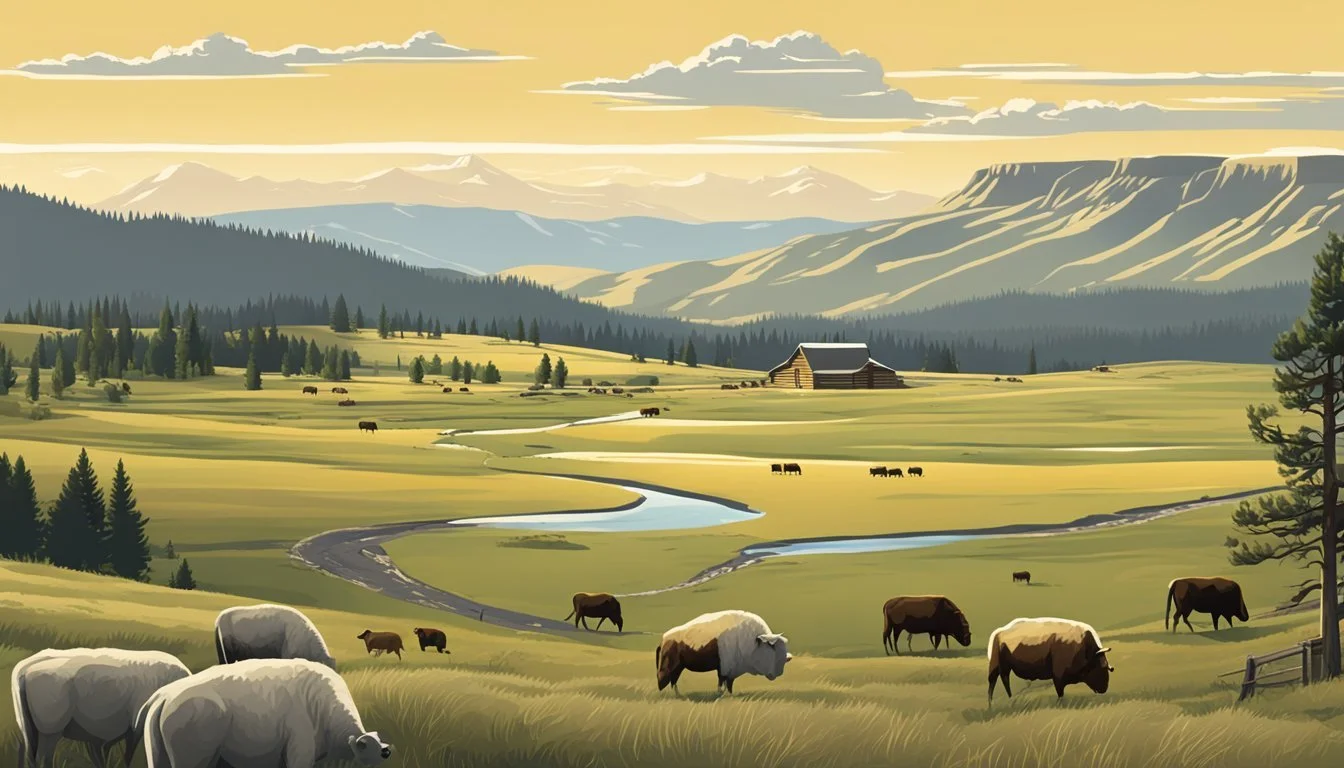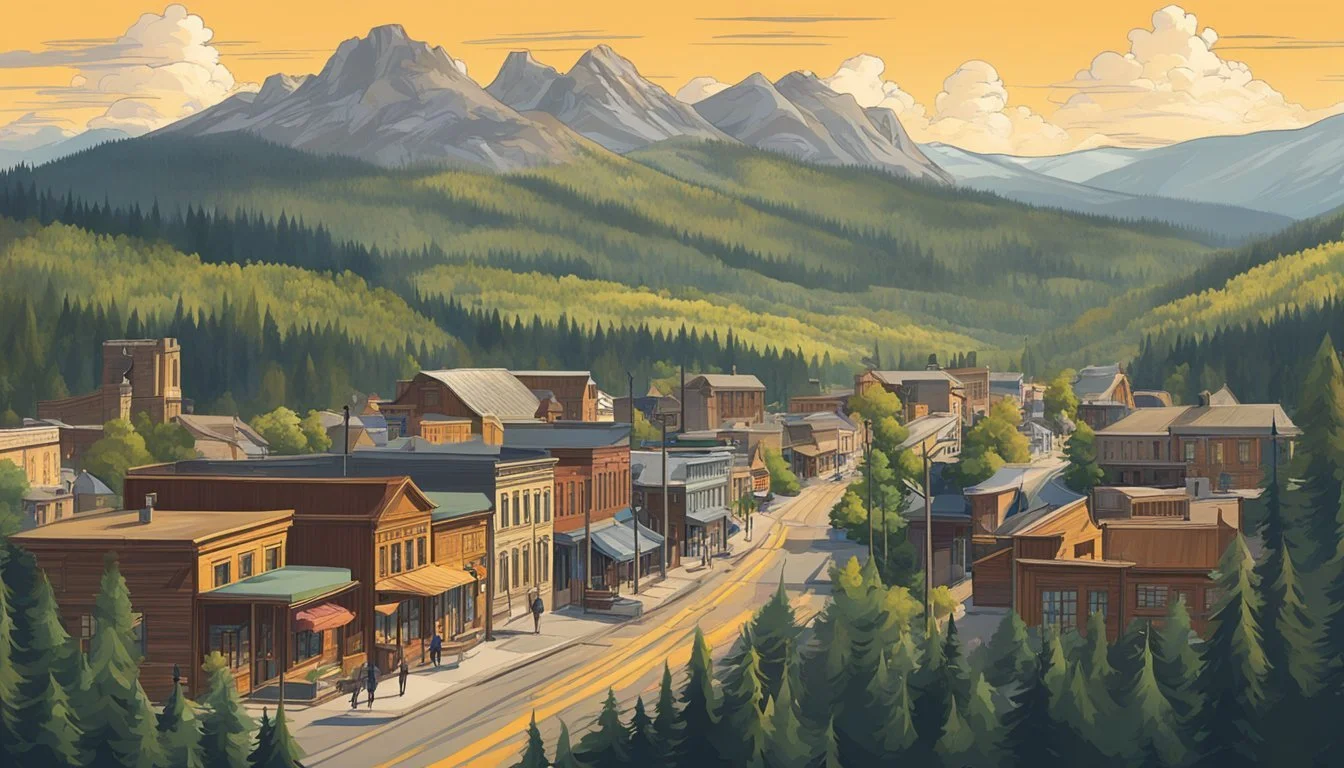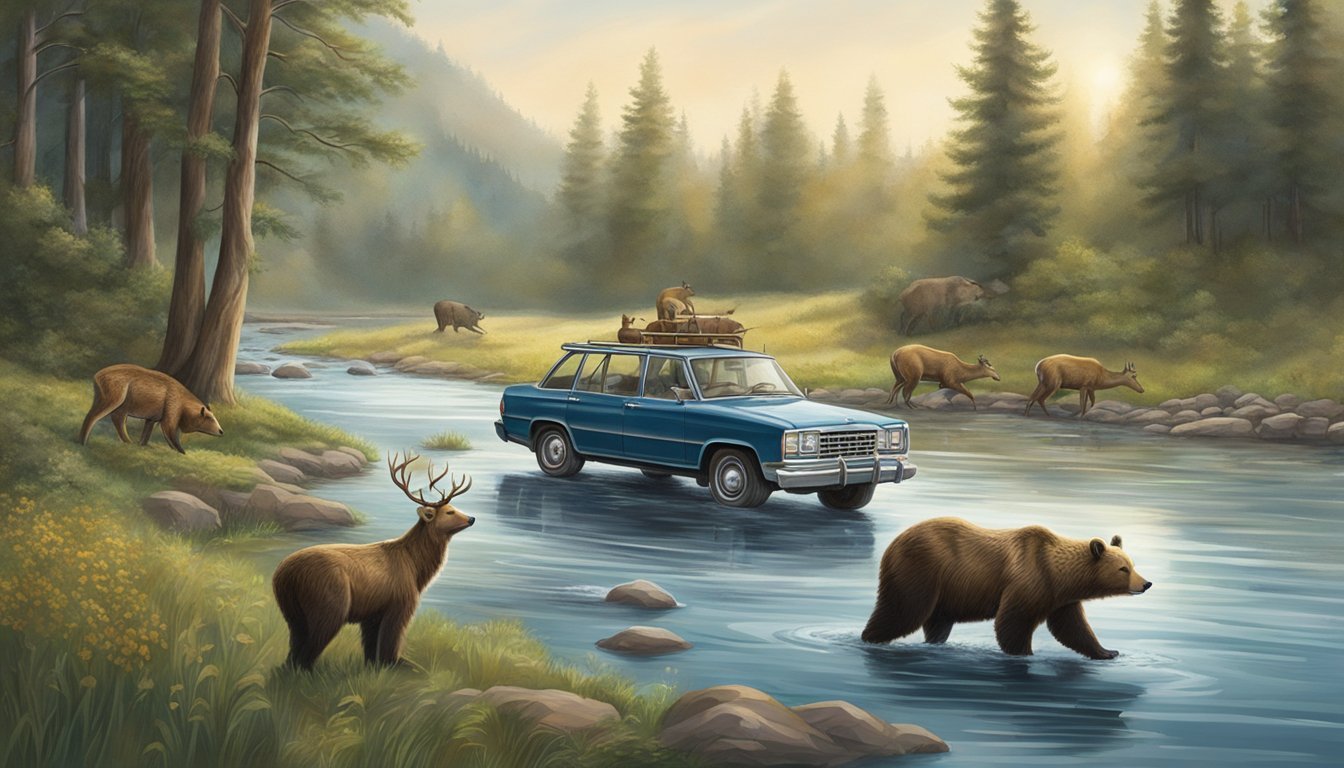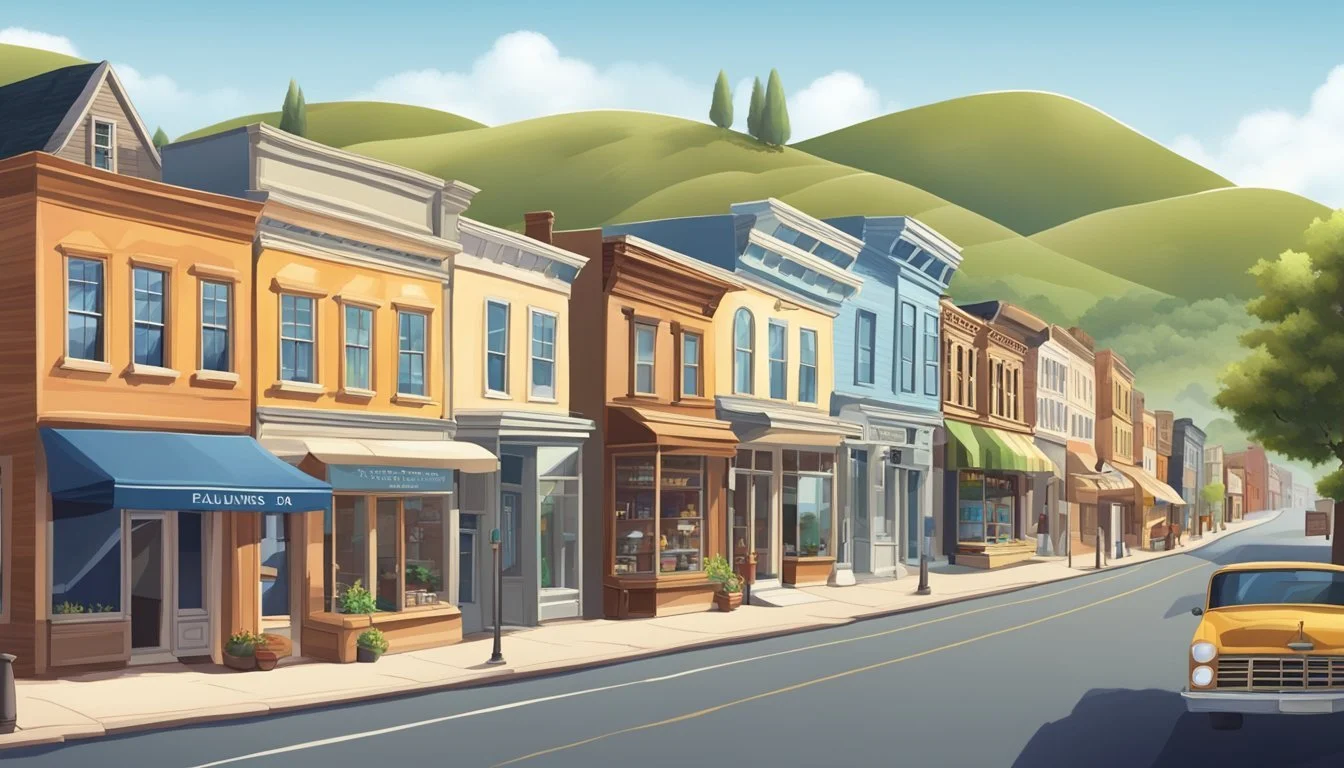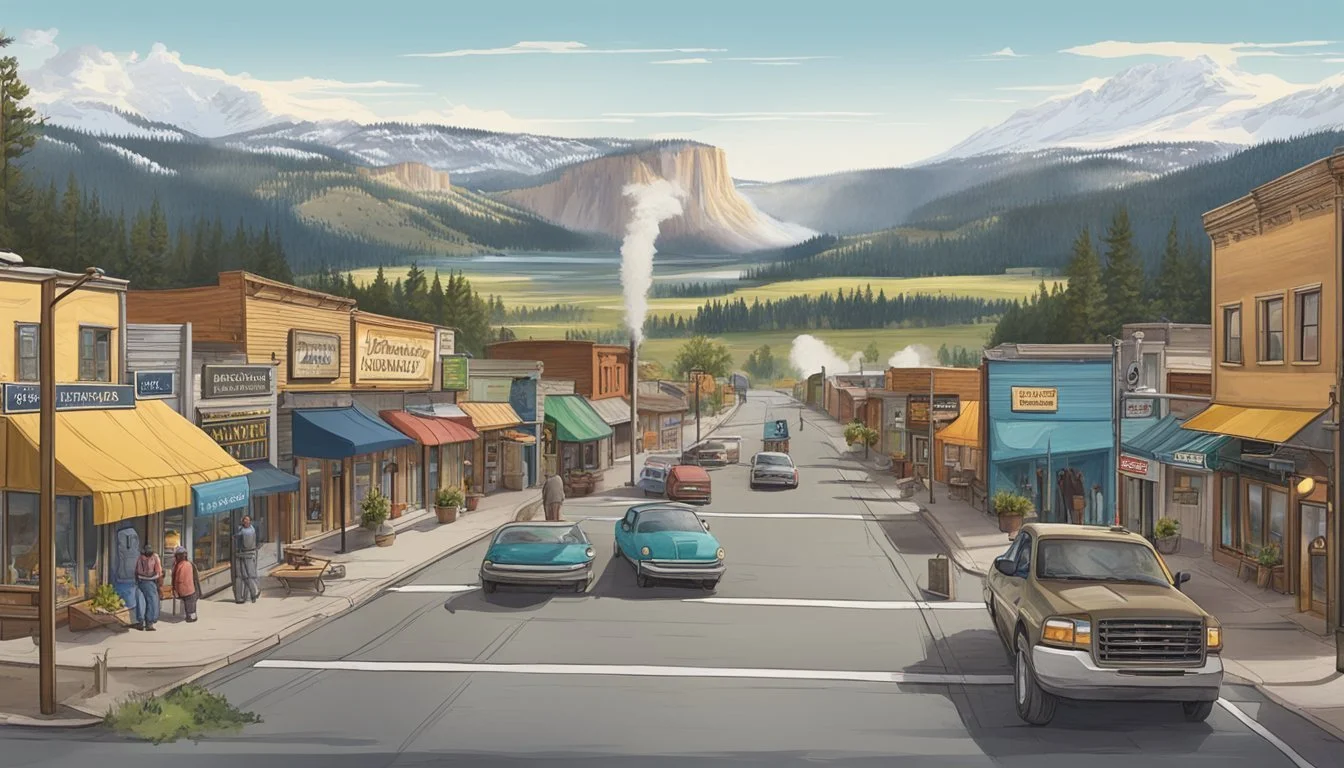Small Town Challenges: Yellowstone's Reflection of Rural Issues
Economic Struggles and Population Decline in Gateway Communities
Yellowstone, the hit television series set in Montana, captivates audiences with its portrayal of rural American life. The show's narrative revolves around the Dutton family's struggle to maintain their vast ranch, mirroring real-world challenges faced by small towns across the American West. Through its characters and storylines, Yellowstone explores complex socioeconomic issues including land ownership, wealth disparity, and the tension between preservation and development.
The series taps into the urban-rural divide, highlighting the conflicting interests between city dwellers and rural landowners. This divide is particularly evident in debates over land usage and environmental conservation. Yellowstone's depiction of these conflicts resonates with viewers, offering a glimpse into the complexities of modern rural life.
The Dutton family's fight to preserve their legacy serves as a metaphor for broader issues facing rural America. As they navigate government regulations, corporate interests, and changing social dynamics, the Duttons embody the resilience and determination of small-town residents striving to maintain their way of life in an evolving landscape.
Historical Context of Yellowstone and Its Communities
Yellowstone's history intertwines with complex narratives of colonization, indigenous displacement, and the rise of ranching culture. These forces shaped the region's development and continue to influence its communities today.
Colonization and Impact on Native Communities
Native American tribes inhabited the Yellowstone area for thousands of years before European colonization. The Crow, Blackfeet, and Shoshone peoples were among those who called this land home.
As westward expansion accelerated in the 19th century, indigenous communities faced increasing pressure. The establishment of Yellowstone National Park in 1872 further complicated their relationship with ancestral lands.
The creation of reservations, like the fictional Broken Rock Indian Reservation in the Yellowstone TV series, reflects real historical processes. These actions drastically altered traditional ways of life and land use patterns.
Foundations of the American West and Ranching
Ranching emerged as a dominant economic and cultural force in the Yellowstone region during the late 19th century. Early settlers, including Confederate veterans, established large cattle operations.
These ranches played a crucial role in shaping the landscape and economy of the American West. They also contributed to the iconic cowboy culture that remains closely associated with the region.
The cattle industry faced challenges from harsh winters, economic fluctuations, and changing land management policies. Despite these obstacles, ranching continues to be an important part of Yellowstone's surrounding communities.
Socioeconomic Dynamics in Contemporary Small Towns
Small towns face unique economic challenges and social shifts in the modern era. Wealth gaps, changing land ownership patterns, and fluctuating property markets shape the socioeconomic landscape of rural communities.
Wealth Disparity and Economic Pressures
Rural areas often struggle with income inequality. A shrinking middle class widens the gap between affluent landowners and working-class residents. Local economies heavily reliant on single industries become vulnerable to market fluctuations.
Limited job opportunities push younger generations to seek work elsewhere. This brain drain can stifle economic growth and innovation in small towns. Some communities turn to tourism or remote work to diversify their economies.
Rising costs of living compound financial stress for many rural households. Essential services like healthcare and education may be less accessible or more expensive than in urban areas.
Land Ownership and Gentrification
Changing patterns of land ownership impact small town dynamics. Large corporations or wealthy outsiders sometimes buy up significant tracts of land. This can alter traditional land use and community relationships.
Gentrification occurs as city dwellers seek rural retreats. Newcomers may drive up property prices and bring different cultural expectations. Long-time residents can feel displaced or priced out of their own communities.
Some towns welcome new investment, while others resist changes to their character. Balancing growth with preservation of local culture becomes a key challenge for rural leadership.
Property Values and the Housing Market
Rural property markets often behave differently from urban ones. Some small towns see stagnant or declining home values due to population loss. Others experience rapid appreciation as they become desirable destinations.
Lack of new construction can lead to housing shortages in growing rural areas. Aging housing stock may require significant upgrades to meet modern standards. This can strain local resources and individual homeowners.
Short-term rentals and vacation homes impact availability for year-round residents. Some communities implement regulations to maintain affordable housing for locals. Balancing tourism revenue with residential needs poses ongoing challenges for small town planners.
Cultural Representation and Storytelling
Yellowstone offers a unique lens into rural American life, portraying complex characters and addressing social issues. The show's storytelling weaves together family drama, political tensions, and cultural conflicts.
The Dutton Family Saga in Media
The Dutton family, led by John Dutton (Kevin Costner), forms the core of Yellowstone's narrative. Their struggle to maintain their ranch reflects broader challenges faced by rural communities.
Beth Dutton emerges as a fierce, complex character, embodying the resilience often associated with rural women. The show explores family dynamics against a backdrop of economic pressures and changing social norms.
Paramount Network's decision to focus on a rural setting offers a fresh perspective in contemporary television. This choice has resonated with audiences, contributing to the show's popularity.
Depicting Native American Rights and Historical Injustices
Yellowstone tackles the sensitive topic of Native American rights, highlighting historical injustices and ongoing conflicts. The series portrays Indigenous characters as multifaceted individuals with agency.
The show explores land disputes between the Dutton ranch and the nearby reservation, reflecting real-world tensions. This storyline brings attention to the complex history of land ownership in the American West.
Taylor Sheridan, the show's creator, aims to present a nuanced view of these issues. The series avoids simplistic portrayals, instead opting for storylines that reveal the complexities of modern Native American experiences.
The Impact of 'Yellowstone' on Modern Perceptions
Yellowstone has significantly influenced public perceptions of rural America. The show's popularity has sparked conversations about issues often overlooked in mainstream media.
The series presents a range of social issues, including environmental conservation, corporate influence, and government intervention. This approach has encouraged viewers to consider multiple perspectives on rural challenges.
Yellowstone's storytelling has also highlighted the potential for alliances across cultural divides. By portraying characters from diverse backgrounds working together, the show suggests possibilities for cooperation in addressing shared problems.
Ranching, Conservation, and Land Use
The clash between ranching traditions, conservation efforts, and land use policies creates complex challenges in rural areas near Yellowstone National Park. These issues shape the region's social, economic, and environmental landscape.
Balancing Development and Wildlife Habitats
Rural areas surrounding Yellowstone face pressure to develop land for economic growth. This often conflicts with efforts to preserve wildlife habitats. Ranchers struggle to maintain their livelihoods while protecting crucial migration corridors for animals like elk and bison.
Local governments implement zoning regulations to manage development. These rules aim to protect open spaces and wildlife while allowing for sustainable growth. Some ranchers view these restrictions as threats to their property rights and financial stability.
Conservation easements offer a potential solution. These agreements compensate landowners for limiting development on their property. This approach helps preserve habitats while providing financial support to ranching families.
National Park Management and Environmental Concerns
Yellowstone National Park's management decisions impact surrounding communities. Park policies on wildlife populations, particularly bison and wolves, affect nearby ranchers. Concerns about disease transmission and livestock predation create tension between park officials and local landowners.
Environmental regulations designed to protect the park's ecosystem can limit ranching practices. Restrictions on grazing, water usage, and pesticide use aim to preserve the region's natural resources. Ranchers must adapt their operations to comply with these rules.
Collaborative efforts between park managers and local stakeholders are essential. Programs like the Greater Yellowstone Coalition bring together diverse groups to address shared concerns. These initiatives seek to balance conservation goals with the needs of rural communities.
Ranching Family Traditions and the Future
Ranching families in the Yellowstone area face challenges in preserving their way of life. Rising land values and operating costs make it difficult for younger generations to continue family operations. Many ranchers feel pressure to sell their land for development.
Diversification helps some ranches remain viable. Adding tourism-based activities like guest ranches or guided hunting trips provides additional income. These adaptations allow families to maintain their ranching traditions while embracing new economic opportunities.
Education and outreach programs support the next generation of ranchers. Organizations like the Montana Ranch Management Program offer training in sustainable practices and business management. These efforts aim to ensure the long-term survival of ranching culture in the Yellowstone region.
Local Vs Federal: Land Use Debates
Land use debates in rural areas near Yellowstone often pit local interests against federal oversight. These conflicts highlight tensions between development, conservation, and traditional ways of life.
Sprawl and Urban Development Pressures
Population growth and urban expansion threaten rural landscapes around Yellowstone. Ranchers face pressure to subdivide their land for housing developments. This sprawl fragments habitats and alters the character of rural communities. Local governments struggle to balance economic growth with preserving open spaces.
Some areas have implemented zoning restrictions to limit sprawl. Others promote cluster development to concentrate housing and preserve larger tracts of land. Complicating matters, climate change impacts like drought and wildfires influence land use decisions.
Environmental Laws and Rural Advocacy
Federal environmental regulations aim to protect ecosystems but can conflict with local desires for autonomy. The Endangered Species Act restricts activities that may harm protected wildlife. Clean Water Act rules impact agricultural practices.
Rural advocacy groups argue for more local control over land management. They promote market-based conservation incentives as alternatives to top-down mandates. Conservation easements allow landowners to voluntarily protect their property while retaining ownership.
Collaborative efforts between federal agencies, local stakeholders, and conservation groups have emerged. These partnerships seek to develop land use plans that balance environmental protection with rural economic needs.
Wildlife and Human Interaction
The Yellowstone region presents unique challenges as wildlife and human populations increasingly overlap. Careful management is required to balance conservation efforts with public safety and local livelihoods.
Grizzly Bear Populations and Safety
Grizzly bears in the Greater Yellowstone Ecosystem have made a remarkable recovery since being listed as endangered in 1975. Their population has grown from around 136 bears to over 700 today. This success story brings new safety concerns for residents and visitors.
Park County and surrounding areas have seen an increase in bear sightings and encounters. Wildlife officials advise carrying bear spray and traveling in groups when hiking. Proper food storage is critical to avoid attracting bears to campsites and homes.
Some ranchers have adopted non-lethal deterrents like electric fencing and guard dogs to protect livestock. These methods aim to reduce conflicts without harming the bears.
Local Wildlife in Yellowstone
Beyond grizzlies, Yellowstone's diverse ecosystem supports wolves, elk, bison, and numerous other species. West Yellowstone serves as a gateway for wildlife viewing, attracting thousands of visitors annually.
Bison management presents ongoing challenges. Herds sometimes wander outside park boundaries onto private land or roadways. This creates safety hazards and potential conflicts with ranchers concerned about disease transmission to cattle.
Wolf reintroduction has been controversial. While ecologically beneficial, some ranchers report livestock losses. Compensation programs exist, but debates continue over wolf population management.
Human-wildlife interactions in Yellowstone reflect broader issues facing rural communities as development expands into wild areas. Balancing conservation, safety, and economic interests remains an ongoing process.
Small Town Life in Popular Culture and Reality
Popular culture often portrays small town life through a romanticized lens, while reality presents a more nuanced picture. The TV series "Yellowstone" offers a compelling exploration of rural issues, particularly those faced by communities adjacent to national parks.
Portrayal of Rural Issues in the 'Yellowstone' Series
"Yellowstone" depicts the struggles of the Dutton family, who own a vast ranch in Montana. The show highlights the tension between traditional ranching culture and modern economic pressures.
Land disputes, political maneuvering, and the fight to preserve a way of life are central themes. The series showcases the complex dynamics of rural law enforcement, where official and unofficial methods often blur.
The Duttons' efforts to maintain their generations-old family ranch serve as a microcosm for broader rural American challenges. "Yellowstone" reflects the values and concerns of many small towns, particularly those grappling with rapid change.
The Intricacies of Living adjacent to a National Park
Communities near Yellowstone National Park face unique challenges and opportunities. Paradise Valley, a real-life setting featured in the show, exemplifies these complexities.
Tourism brings economic benefits but also strains local infrastructure and housing markets. Residents must balance conservation efforts with the need for economic development.
Wildlife management becomes a daily concern, as animals don't recognize park boundaries. Ranchers must protect their livestock while respecting wildlife corridors.
The proximity to protected lands can lead to conflicts over land use, water rights, and development restrictions. These issues often pit long-time residents against newcomers and government agencies, mirroring conflicts portrayed in "Yellowstone."
Future Prospects and Challenges
Small towns near Yellowstone face economic shifts, climate impacts, and cultural evolution. These factors will shape their trajectories in the coming years.
Adapting to Economic Shifts and Climate Change
Rural communities must diversify their economies beyond traditional industries. Tourism remains vital, but over-reliance leaves towns vulnerable to seasonal fluctuations. Some areas are exploring sustainable agriculture, renewable energy, and remote work opportunities.
Climate change poses new risks. Increased wildfires threaten infrastructure and tourism. Drought impacts agriculture and water supplies. Towns need robust disaster preparedness and climate adaptation plans.
Improved digital infrastructure is crucial. High-speed internet enables remote work and new business models. This could attract younger residents and entrepreneurs to revitalize local economies.
Maintaining Cultural Identity and Legacy
Preserving heritage while embracing progress is a delicate balance. Towns grapple with retaining their unique character as new residents and businesses arrive. Some communities are updating zoning laws to maintain their aesthetic and limit overdevelopment.
Intergenerational knowledge transfer is key. Programs pairing elders with youth help maintain traditional skills and values. Local museums and cultural centers play a vital role in educating visitors and residents about the area's history.
Balancing conservation with development remains contentious. Towns must find ways to protect natural resources while allowing for responsible growth. Community-led planning initiatives can help ensure development aligns with local values and needs.




